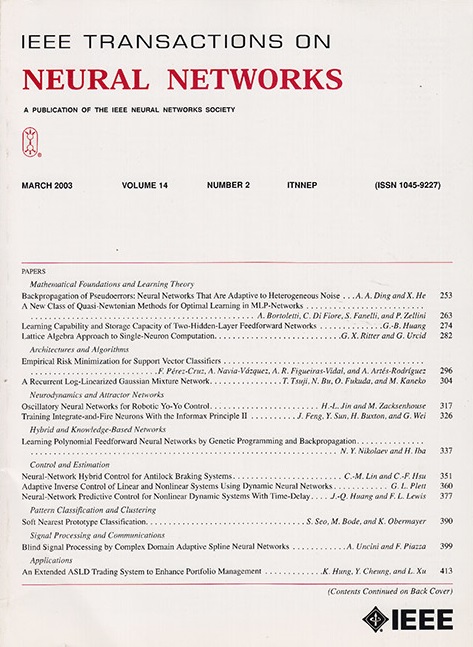Enhancing Distributed Neural Network Training Through Node-Based Communications
IF 8.9
1区 计算机科学
Q1 COMPUTER SCIENCE, ARTIFICIAL INTELLIGENCE
IEEE transactions on neural networks and learning systems
Pub Date : 2023-09-18
DOI:10.1109/TNNLS.2023.3309735
引用次数: 0
Abstract
The amount of data needed to effectively train modern deep neural architectures has grown significantly, leading to increased computational requirements. These intensive computations are tackled by the combination of last generation computing resources, such as accelerators, or classic processing units. Nevertheless, gradient communication remains as the major bottleneck, hindering the efficiency notwithstanding the improvements in runtimes obtained through data parallelism strategies. Data parallelism involves all processes in a global exchange of potentially high amount of data, which may impede the achievement of the desired speedup and the elimination of noticeable delays or bottlenecks. As a result, communication latency issues pose a significant challenge that profoundly impacts the performance on distributed platforms. This research presents node-based optimization steps to significantly reduce the gradient exchange between model replicas whilst ensuring model convergence. The proposal serves as a versatile communication scheme, suitable for integration into a wide range of general-purpose deep neural network (DNN) algorithms. The optimization takes into consideration the specific location of each replica within the platform. To demonstrate the effectiveness, different neural network approaches and datasets with disjoint properties are used. In addition, multiple types of applications are considered to demonstrate the robustness and versatility of our proposal. The experimental results show a global training time reduction whilst slightly improving accuracy. Code:通过基于节点的通信增强分布式神经网络训练。
有效训练现代深度神经架构所需的数据量显著增长,导致计算需求增加。这些密集型计算由上一代计算资源(如加速器或经典处理单元)的组合来解决。尽管如此,梯度通信仍然是主要的瓶颈,尽管通过数据并行策略获得了运行时的改进,但仍阻碍了效率。数据并行涉及潜在高数据量的全球交换中的所有进程,这可能会阻碍实现所需的加速和消除明显的延迟或瓶颈。因此,通信延迟问题带来了重大挑战,严重影响了分布式平台的性能。本研究提出了基于节点的优化步骤,以显著减少模型副本之间的梯度交换,同时确保模型收敛。该方案是一种通用的通信方案,适合集成到广泛的通用深度神经网络(DNN)算法中。优化考虑了每个复制副本在平台内的特定位置。为了证明其有效性,使用了不同的神经网络方法和具有不相交特性的数据集。此外,还考虑了多种类型的应用程序,以证明我们的提案的稳健性和多功能性。实验结果表明,在略微提高准确性的同时,全局训练时间减少。代码:https://github.com/mhaut/eDNNcomm.
本文章由计算机程序翻译,如有差异,请以英文原文为准。
求助全文
约1分钟内获得全文
求助全文
来源期刊

IEEE transactions on neural networks and learning systems
COMPUTER SCIENCE, ARTIFICIAL INTELLIGENCE-COMPUTER SCIENCE, HARDWARE & ARCHITECTURE
CiteScore
23.80
自引率
9.60%
发文量
2102
审稿时长
3-8 weeks
期刊介绍:
The focus of IEEE Transactions on Neural Networks and Learning Systems is to present scholarly articles discussing the theory, design, and applications of neural networks as well as other learning systems. The journal primarily highlights technical and scientific research in this domain.
 求助内容:
求助内容: 应助结果提醒方式:
应助结果提醒方式:


